
My previous blog was about popular first names ... now for a blog about popular surnames (ie, last/family names)! But before we get started, here's a little pop-quiz - what country is my friend Mr. Foley's surname from?

My previous blog was about popular first names ... now for a blog about popular surnames (ie, last/family names)! But before we get started, here's a little pop-quiz - what country is my friend Mr. Foley's surname from?
In my last two posts, I introduced some opportunities that arise from integrating event stream processing (ESP) within the nodes of a distributed network. We considered one type of deployment that includes the emergent Internet of Things (IoT) model in which there are numerous end nodes that monitor a set of sensors,
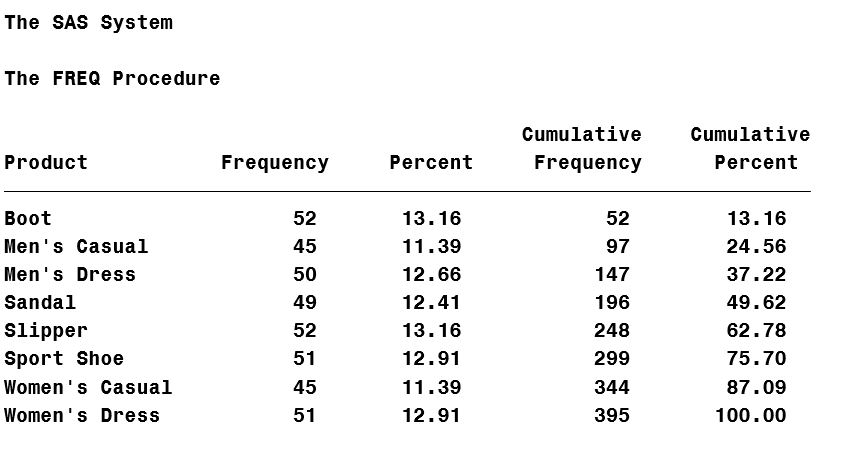
Default PROC FREQ output looks like this: Suppose you don't want the two cumulative statistic columns above. No problem. Those can be suppressed with the NOCUM option on the TABLE statement, like this: proc freq data=sashelp.shoes; table product / nocum; run;
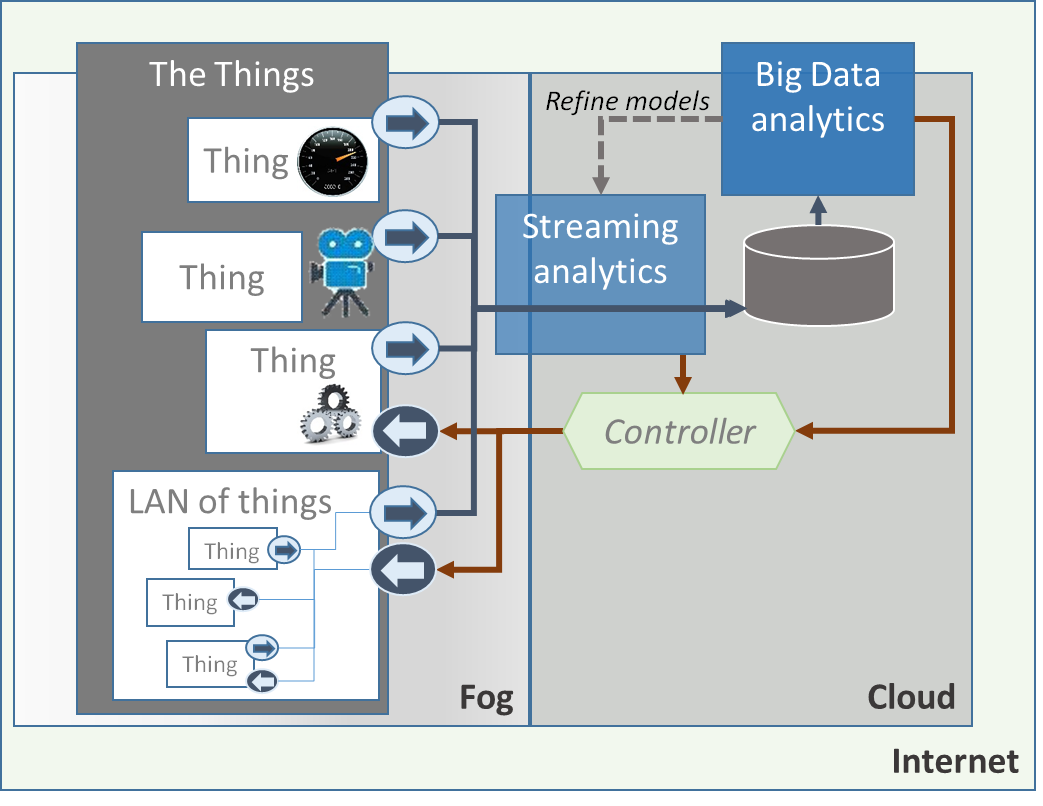
The Internet has been around a long time. "Things" have been around even longer. Put the things on the Internet, aka the Internet of Things (IoT), and you get so much hype that IoT is at the top of Gartner's "Peak of Inflated Expectations" – and poised for a fall into the "Trough of

If you have your SAS Certified Platform Administrator Credential, then it’s clear that you’ve studied a lot to achieve it. But suddenly the Hadoop era shows up and what you find are big gaps in your skills inventory. SAS administrators must be familiar with all the data SAS platform can

USA Today recently published an article titled 10 retailers take two-thirds of your money. The story highlights the revenue distribution among the Top 100 retailers in the S&P 1500. It was startling to see that such a small number of retail powerhouses take in such a large percentage of consumers’ income.

An important goal of SAS Environment Manager is to communicate with existing software systems. This capability includes not only monitoring other non-SAS platform resources, but also means having the ability to respond to events from outside the SAS platform. We’ve seen how SAS Environment Manager can generate an event for external consumption (see Scott McCauley’s

A couple of years ago, I blogged about the most popular baby names in the US over the past 100 years. This time, I focus on the most recent year, and take it to the state level! But before we get started, here's a picture of my friend Jennifer's daughter,

A couple weeks ago, I completed my third half ironman (a triathlon consisting of a 1.2 mile swim, 56 mile bike ride, and 13.1 mile run), and WOW; it was a hard event! I had an awesome race back in October and had high expectations for this race – even
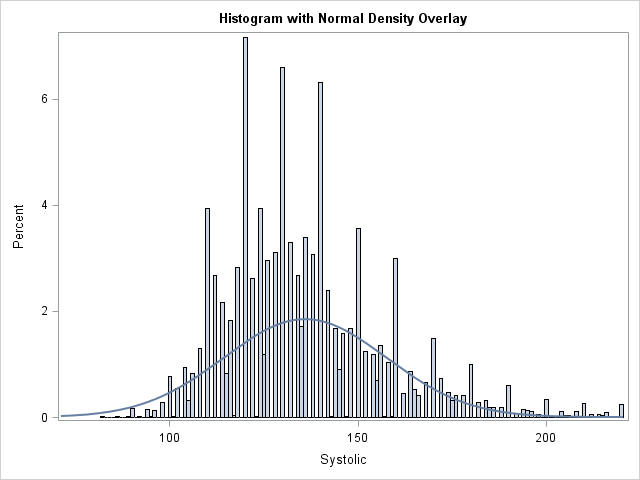
I was reading a statistics book when I encountered a histogram that caught my eye. The histogram looked similar to the one at the left. It contained a normal density estimate overlaid on a histogram, but the height of the density curve seemed too short when compared to the heights

There is a job category unfamiliar to most people that plays a crucial role in the creation of analytics software. Most can surmise that SAS hires software developers with backgrounds in statistics, econometrics, forecasting or operations research to create our analytical software; however, most do not realize there is another

SAS Cares. That’s how we want you to feel once you become a SAS customer. How do we do that? By bringing all of the support resources together with one goal in mind – helping you become a better SAS user. The SAS Cares experience involves everything from searching on
In my previous post, I discussed the similarities, differences and overlap between event stream processing (ESP) and real-time processing (RTP). In this post, I want to highlight three things that need to get real. In other words, three things that should be enhanced with real-time capabilities, whether it’s ESP, RTP or

Have you ever heard the expression, “Guess I gotta pay the piper.”? It is often used about a situation where a price is paid that is considered too high or unfair, but failing to pay the price often results in dire consequences. This expression is based on the story of

I guess most of us have a morbid curiosity about how we're going to die ... which is probably why Francis Boscoe's Causes of Death map went viral (no pun intended, of course!). This blog post shows how to create such a map... But first, to lighten up the mood a bit

I’ve had the good fortune to support the Pharmaceutical Industry SAS Users Group as their SAS liaison for the majority of their conferences since 1996. That’s meant a lot to me personally and professionally over the years. I’ve developed some genuine friendships with the dedicated volunteer leaders who organize the
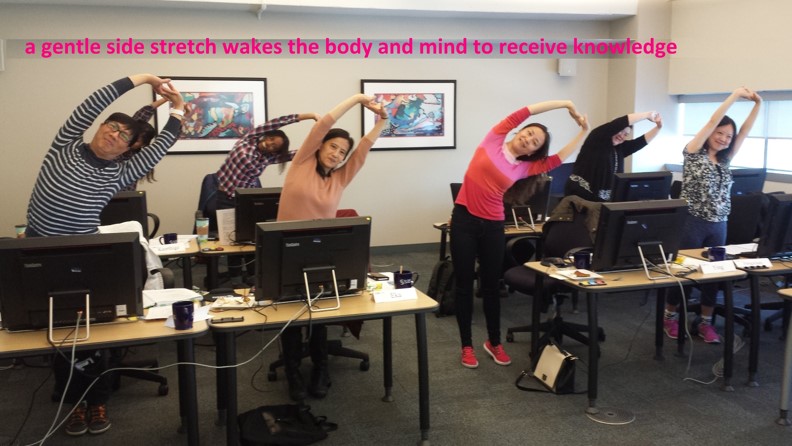
I recently taught a SAS training course where the students were very engaged. They had so many questions, I could have spent the next month writing helpful blog posts that came from that one class. However, I picked this one question that the class begged for me to share. The

A SAS programmer asked for a list of SAS/IML functions that operate on the columns of an n x p matrix and return a 1 x p row vector of results. The functions that behave this way tend to compute univariate descriptive statistics such as the mean, median, standard deviation, and quantiles. The following
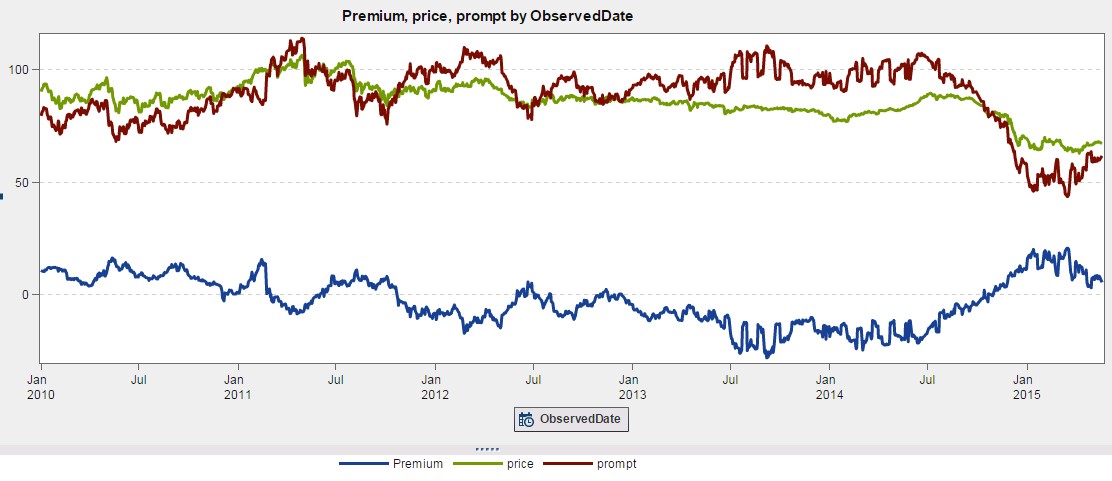
This month we take a fresh analytical view of our hypothetical VirtualOil portfolio by comparing the forward price of WTI (the green line) to the prompt month price (red line). The resulting graphic (chart 1) demonstrates the relative stability of the 48-month forward price in contrast to a very active spot
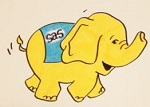
SAS offers a rich collection of features for working with Hadoop quickly and efficiently. This post will provide a brief run-through of the various technologies used by SAS to get to data in Hadoop and what’s needed to get the job done. Working with text files Base SAS software has the
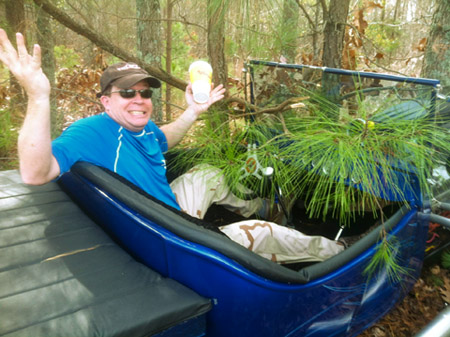
A recent news report shows an unexpected spike in traffic fatalities here in the US in 2015. This got me wondering what the data shows ... for the past 100 years or so... Driving was a lot more dangerous in the early days. If you were in a wreck, you

I was at a family gathering recently. An elderly relative asked my teenage nephew, "So, what do you want to be when you grow up?" My nephew looked over at me hoping I'd rescue him from the situation. I didn't. But I also recognized the pressure a teen can feel
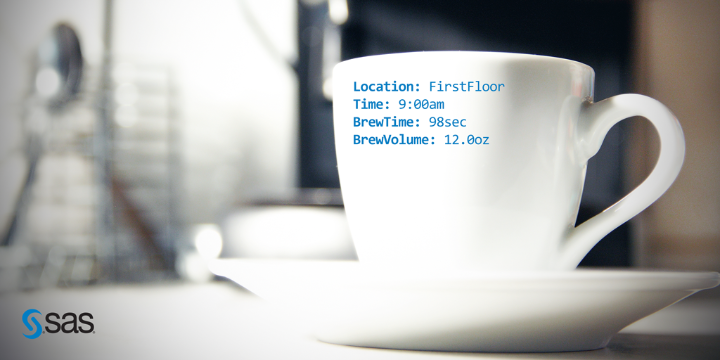
SAS software is used around the world in some of the most sophisticated ways, like ATM fraud detection and cancer research. But recently, I used it for a practical, and much needed, task -- replacing our break room coffee machine. Now, this is no ordinary coffee machine. It also makes

I previously wrote about the best way to suppress output from SAS procedures. Suppressing output is necessary in simulation and bootstrap analyses, and it is useful in other contexts as well. In my previous article, I wrote, "many programmers use ODS _ALL_ CLOSE as a way to suppress output, but
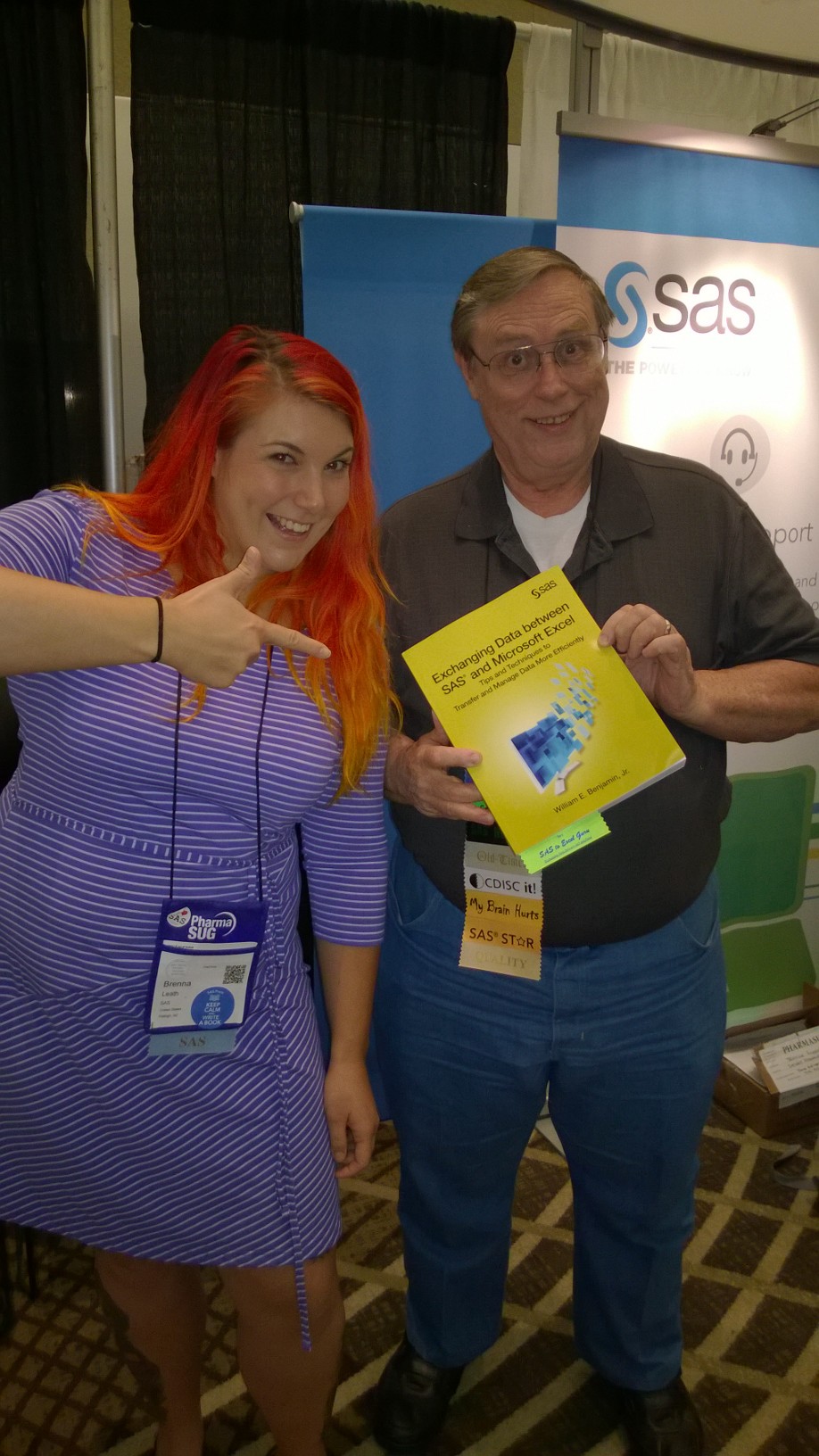
The final figures are in! This year there was a fierce battle for the top spot of the SAS Global Forum 2015 books bestseller list. In a nail biting finish, newcomer, Exchanging Data between SAS and Microsoft Excel: Tips and Techniques to Transfer and Manage Data More Efficiently, beat off

“Phew! That tip alone was a life saver,” said a student in one of my SAS SQL classes. “Before, I would have to read about ten Google search results before I could find that content of the sort you shared in class.” That student was referring to the tip I
In my last post, we examined the growing importance of event stream processing to predictive and prescriptive analytics. In the example we discussed, we looked at how all the event streams from point-of-sale systems from multiple retail locations are absorbed at a centralized point for analysis. Yet the beneficiaries of those

French fries, pommes frites, chips…or just fries…are indisputably one of the most popular foods in America with the average American consuming nearly 29 pounds of fries a year.
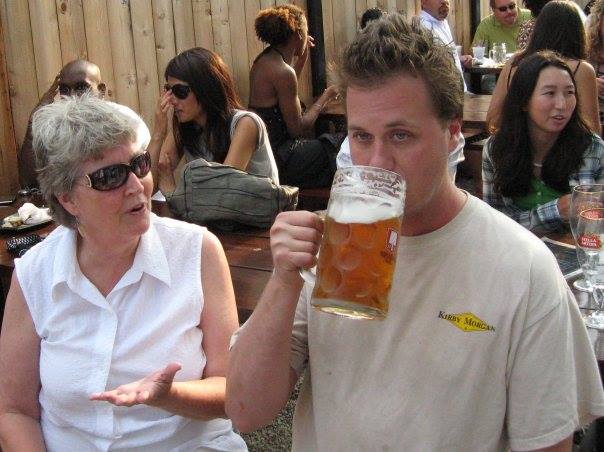
I saw an interesting graph on dadaviz.com that claimed Italians had gone from drinking twice as much as Americans in 1970, to less than Americans in recent years. The data analyst in me just had to "independently verify" this factoid ... But before I get into the technical part of this

A proof of concept (POC) is smartest way for customers to evaluate if a product meets the required objectives, and the best way for vendors to demonstrate why they feel they are best placed to resolve the current outstanding problems. However, not all POCs are successful. Let’s explore why. What is